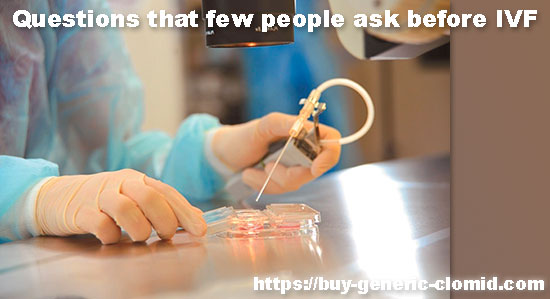Clostilbegyt (clomiphene) is one of the classes of selective estrogen receptor modulators. The mechanism of action of Clostilbegyt is based on the selective effect on estrogen receptors of the hypothalamic-pituitary system, in connection with which the receptors are blocked for estrogens and the feedback mechanism increases the secretion of gonadotropins (follicle-stimulating and luteinizing hormones), which, acting on the follicles in the ovaries, causes stimulation of their function (ovulation stimulation). There are indications that the blockade of the estrogen receptors of the hypothalamus leads to increased production of gonadoliberins, thereby providing a higher level of regulation of the hypothalamic-pituitary-ovarian system.
Clostilbegyt has certain pharmacokinetic features: good absorption by oral administration, a long (up to 7 days) half-life due to active binding to plasma proteins.
Indications for the use of Clostilbegyt
The indication for the use of clostilbegyt is infertility associated with the absence of ovulation. Taking into account the long experience (several decades) of using this drug for the treatment of anovulation, the pros and cons of using this drug have been well studied, various ovulation stimulation schemes have been developed.
Pros and cons of the drug
The main advantages of using clostilbegyt to achieve pregnancy are:
- low cost;
- wide availability;
- oral route of administration;
- high efficacy (in the absence of clomiphene resistance);
- a small number of possible complications in the treatment of infertility (low frequency of multiple pregnancies, low frequency of ovarian hyperstimulation syndrome).
However, despite the obvious advantages, clostilbegyt has significant disadvantages that limit its use in the treatment of infertility. The main negative factors when using clostilbegyt are:
- antiestrogenic effect, which can lead to impaired endometrial function, impaired properties of cervical mucus and vaginal epithelium;
- in some patients, the hypoestrogenic condition can cause vasomotor reactions (hot flashes);
- the use of SMER increases the risk of thrombotic complications of any localization.
Returning to the mechanism of ovarian function stimulation when using clostilbegyt (stimulation of gonadotropin secretion against the background of blockade of estrogen receptors of the hypothalamic-pituitary system), it is important to understand that the use of clostilbegyt in hypogonadism (hypopituitarism) is ineffective, since increased gonadotropin secretion will not be observed due to their absence. In this situation, the use of natural gonadotropin preparations is indicated. Thus, stimulation of ovulation with clostilbegyt is effective only with normogonadotropic anovulation.

Drug can be a first-line therapy drug if ovulation stimulation is necessary in patients with polycystic ovary syndrome (in the absence of clomiphene resistance).
Clostilbegyt in infertility
Clostilbegyt in the treatment of infertility is an inexpensive, highly effective first-line drug for normogonadotropic anovulation. An important positive aspect of its use is the possibility of oral administration. However, the use of this drug is associated with a certain risk of complications and should be carried out only by a doctor, if possible, using ultrasound monitoring of folliculogenesis and endometrial development. In the vast majority of cases, the negative antiestrogenic effect of the drug on the thickness of the endometrium can be corrected by using estrogen-type drugs after the end of taking clostilbegyt in the planned fertility cycle.


